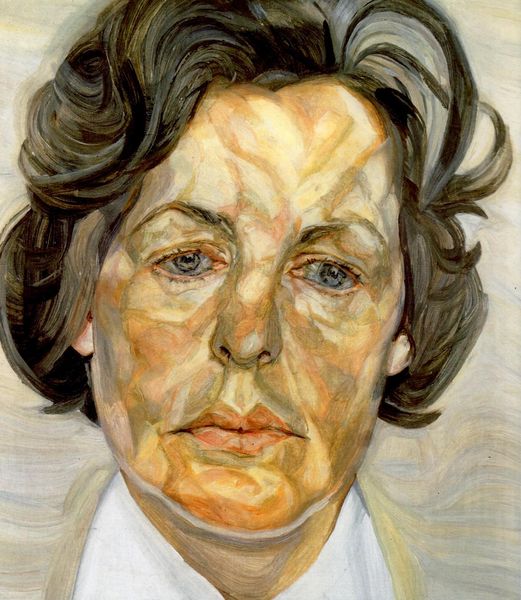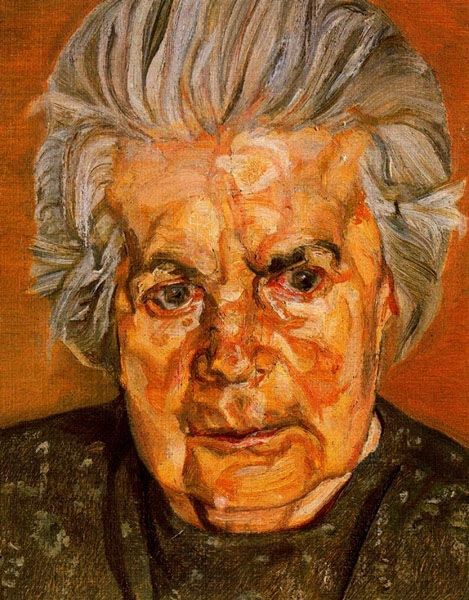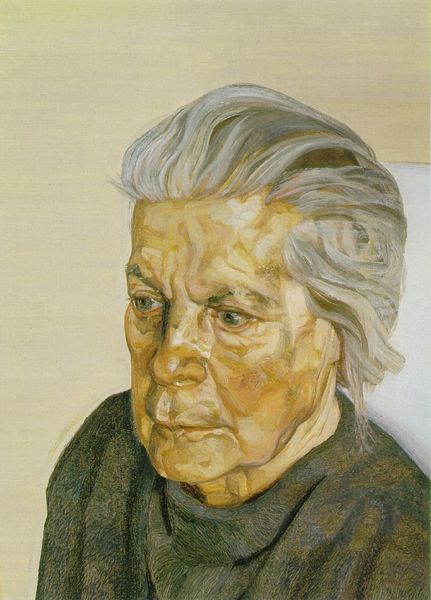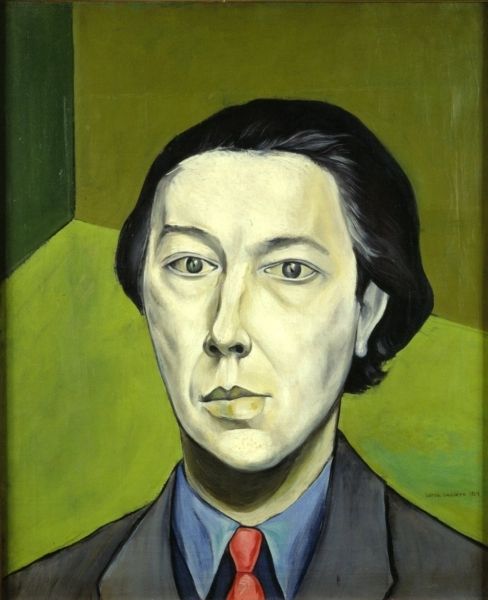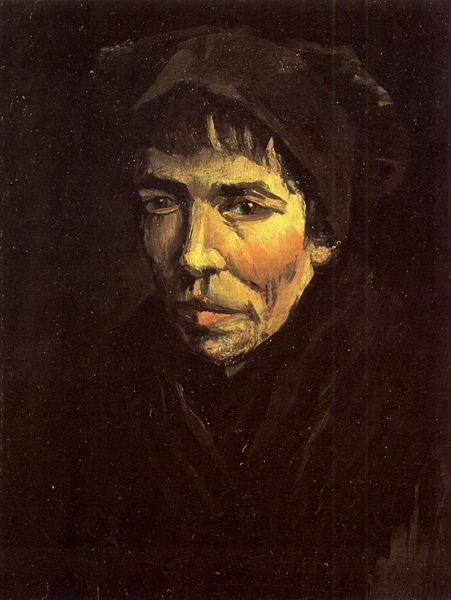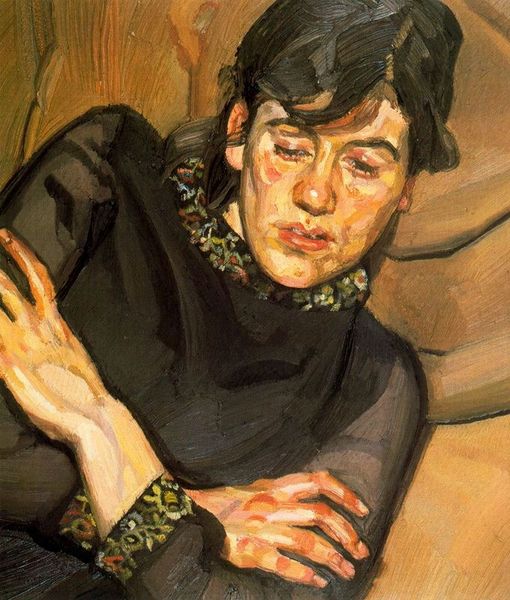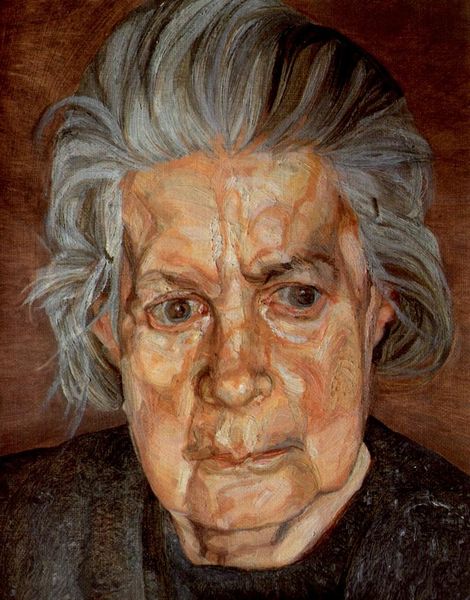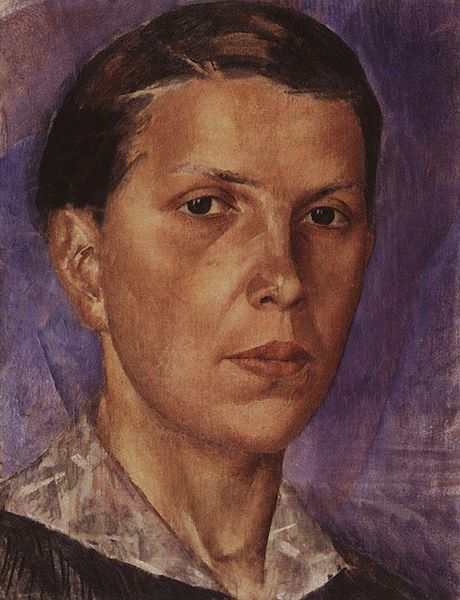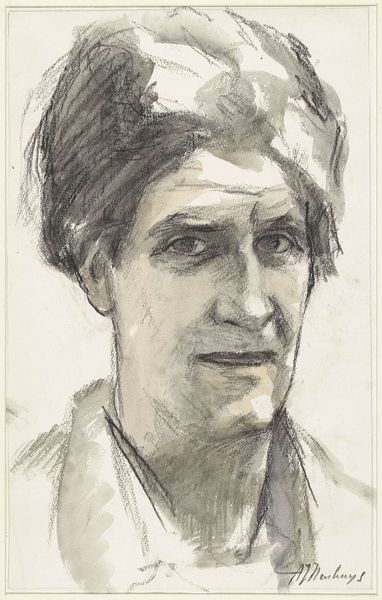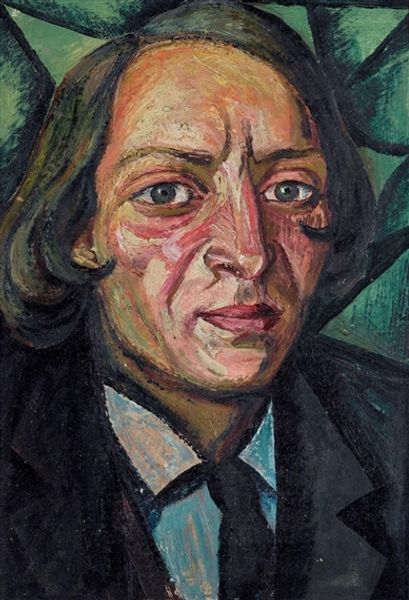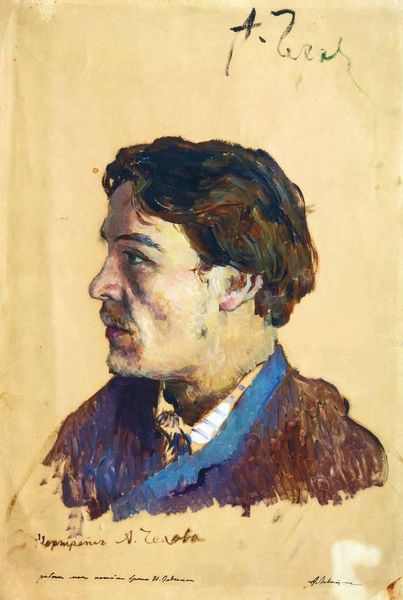
painting, oil-paint
#
portrait
#
self-portrait
#
portrait
#
painting
#
oil-paint
#
modernism
#
realism
Copyright: Lucian Freud,Fair Use
Editor: Lucian Freud's "A Woman Painter," painted in 1954 using oil, presents such an intense gaze. What strikes me most is the unvarnished realism—it’s compelling but also a little unsettling. How do you interpret this work within the art world’s broader history? Curator: It’s important to consider the social context. Post-war Britain saw a move towards realism, a rejection of pre-war romanticism. Freud, by painting his subjects with such unflinching honesty, challenged idealized portrayals of women prevalent in art history. Think about the power dynamics inherent in portraiture, who traditionally controlled the gaze? Editor: So, by presenting this woman without embellishment, he's subverting that traditional dynamic? It's almost like he's refusing to flatter her, showing her exactly as she is. Curator: Exactly. And who was this "Woman Painter"? The title itself is interesting; he’s not identifying her specifically. Perhaps, by generalizing, he’s making a broader statement about the role of women artists in a male-dominated field, and challenging institutional biases of the time. Do you find anything revealing in her attire? Editor: It’s just a simple dark turtleneck. Functional, almost like a uniform. It suggests a focus on her work rather than on projecting a certain image. Is that linked to the socio-economic changes following the Second World War? Curator: Absolutely. Austerity and a changing social landscape influenced artists to prioritize substance over spectacle. Her practical clothing might symbolize a shift in values, emphasizing artistic labour. This reflects a democratisation in the art world. Do you see a narrative in her face? Editor: I see determination, maybe even a hint of defiance. Seeing the piece in this historical context really shifts how I see this piece! It’s less about an individual portrait and more about the public role of female artists. Curator: Precisely. Analyzing it within its socio-political environment allows for a deeper engagement, highlighting how Freud’s art was part of this shift in power. Editor: I never thought about a painting being involved in a conversation about socio-political roles! Curator: Well now you have a taste of the complexity that can shape art and what the message implies.
Comments
No comments
Be the first to comment and join the conversation on the ultimate creative platform.
